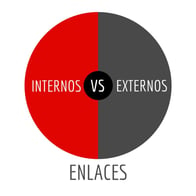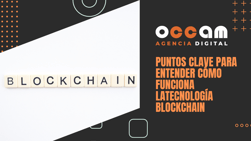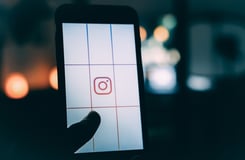what is the point of using internal and external links in my content?
Index Content
Few remember him today, but the acclaimed German goldsmith Johannes Gutenberg pressed the start button for the information age we are immersed in today. In this post we are looking for answers, and sometimes the best way to find them is to take a look at evolution. Who would have thought that the master printer would have thought that the movable type he created around 1450 would unleash an entire IT industry? And here we are, wondering what internal and external links are for in IT content.
"Information technology and business are increasingly inextricably intertwined. I don't think anyone can talk meaningfully about one without talking about the other " - Bill Gates
what are internal and external links?

When talking about links, hyperlinks come to mind, because that's what they really are: hyperlinks that, once we click on them, direct us to another page. And this is where the story of internal and external links changes. If the destination page to which the link directs us is within the same domain, we are talking about an internal link. If, on the other hand, we find links that direct us to a page outside our domain, then we will be dealing with an external link.
As we can see, the main difference between the two is found in the domain, that is to say, that which humanises the network and the unique name of your website. However,what is their function within the content? What criteria should we take into account when including them? How can they benefit our website? We continue to ask questions and we continue to provide answers to your uncertainties.
what is the purpose of the internal and external links we include in our IT content?
First of all, we are going to talk about internal links and then we will show you everything related to external links. At the end of this section you will be able to make a comparison between both elements and understand them in a quick, simple and effective way.
- INTERNAL LINKS. In reality, this is one of the least optimised factors in OnPage SEO. There are many websites that neglect these elements when, in reality, they are essential for our page. These are some of their functions:
- Expand the information. Thanks to their inclusion in the posts we invite the user reader to expand the information of the article improving the quality of our blog and its usability.
- Thanks to them you can take advantage and include articles that you have written some time ago and serve as a reminder to users, as well as improve the understanding of the topic.
- They help Google to crawl the website, as we are leading the way in some way and Google will detect that this is something important and will index it better.
- Google will better interpret what each URL is about because of the anchor texts, which are the part of the link that we click on to take us to the new site.
- The authority of the pages will be better channelled so that we can rank some of them if we want to.
- EXTERNAL LINKS. There is no doubt that including internal links to our site is a good option, but in the same way, linking our articles to other websites is also advisable. The reasons for this are explained below:
- They open new paths: external links help us to improve our relationships, because if the pages to which you have been linked from your blog detect the mention, they will probably enter our site and link to it at some point.
- They expand the information. As with internal links, we will be giving the possibility of completing the information, expanding it and thus increasing the quality of our content.
- They make your site more valuable, as we will be creating a way to tell our users to go to other interesting content.
Despite the importance of internal and external links in the content we generate, this does not imply that they have to be included excessively.
The inclusion of links helps to position the SEO of technological websites
Links are used with a clear objective: to establish relationships between two resources. However, they do not always have to be links to other web pages; it is also possible to link to images and files. Adopting an SEO stance, links allow us to make Google understand that this is something important to us. Furthermore, they enable it to find new published content. They are an effective way of improving web positioning by linking to other content, both from our domain and from other domains.
To carry out the inclusion of links it is essential to have a clear objective in mind and not to choose them randomly: "A good strategy should outline a network of links between different contents of the same website to facilitate the work of search engines and, thanks to this, improve its positioning". In conclusion, it is a mistake to think that by linking only to your website you will get all the strength and stand out from the rest.
do you have any doubts about this?





